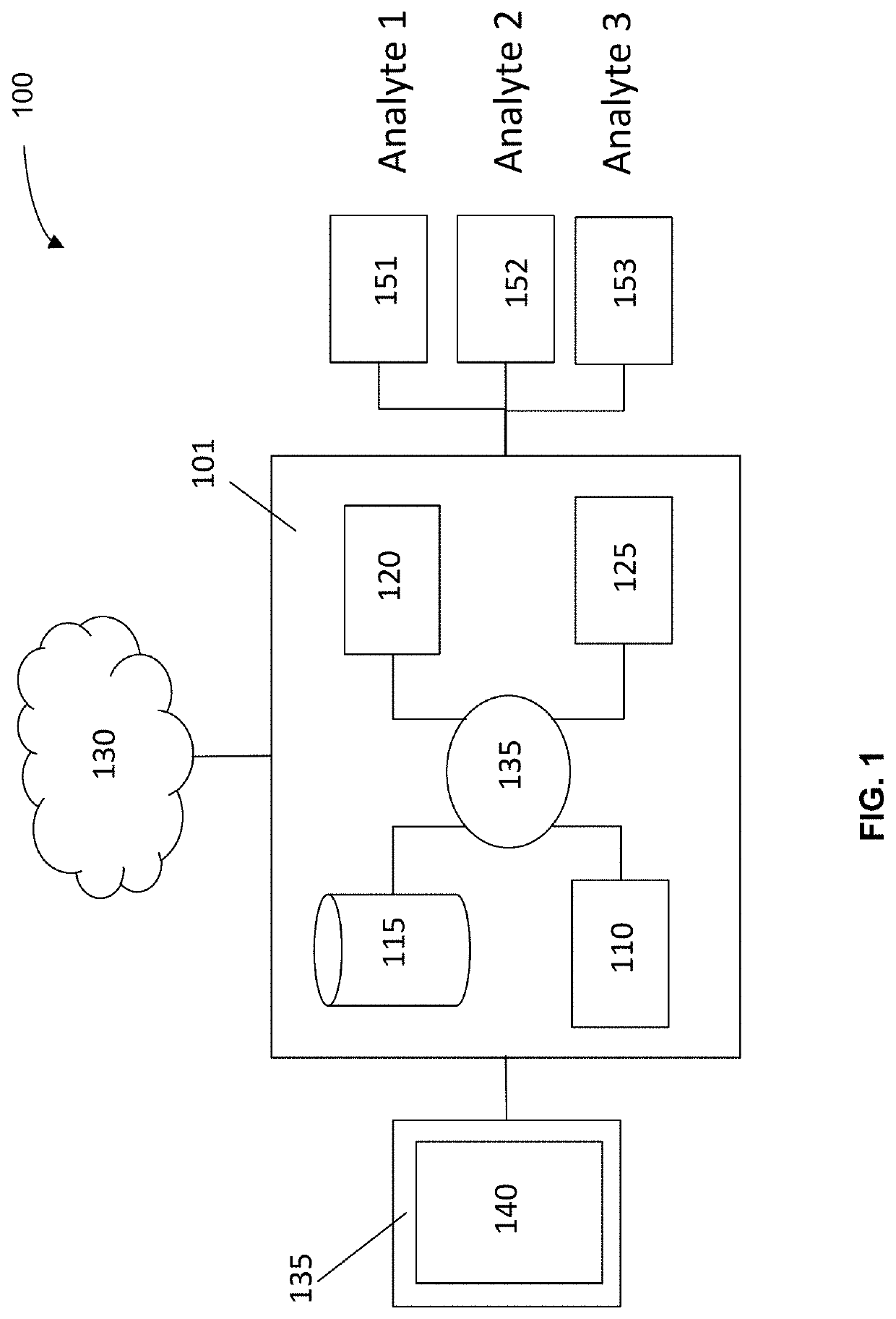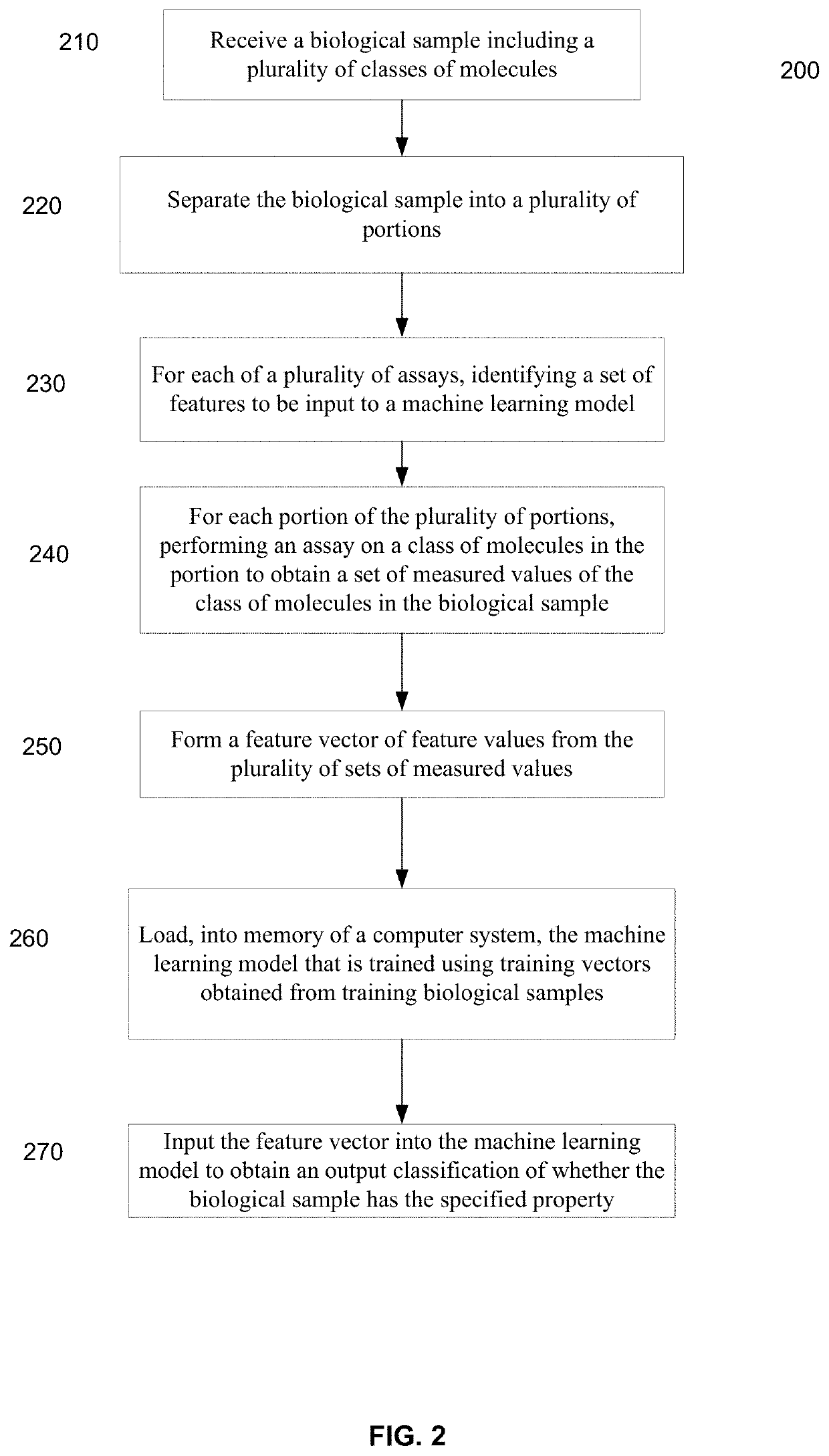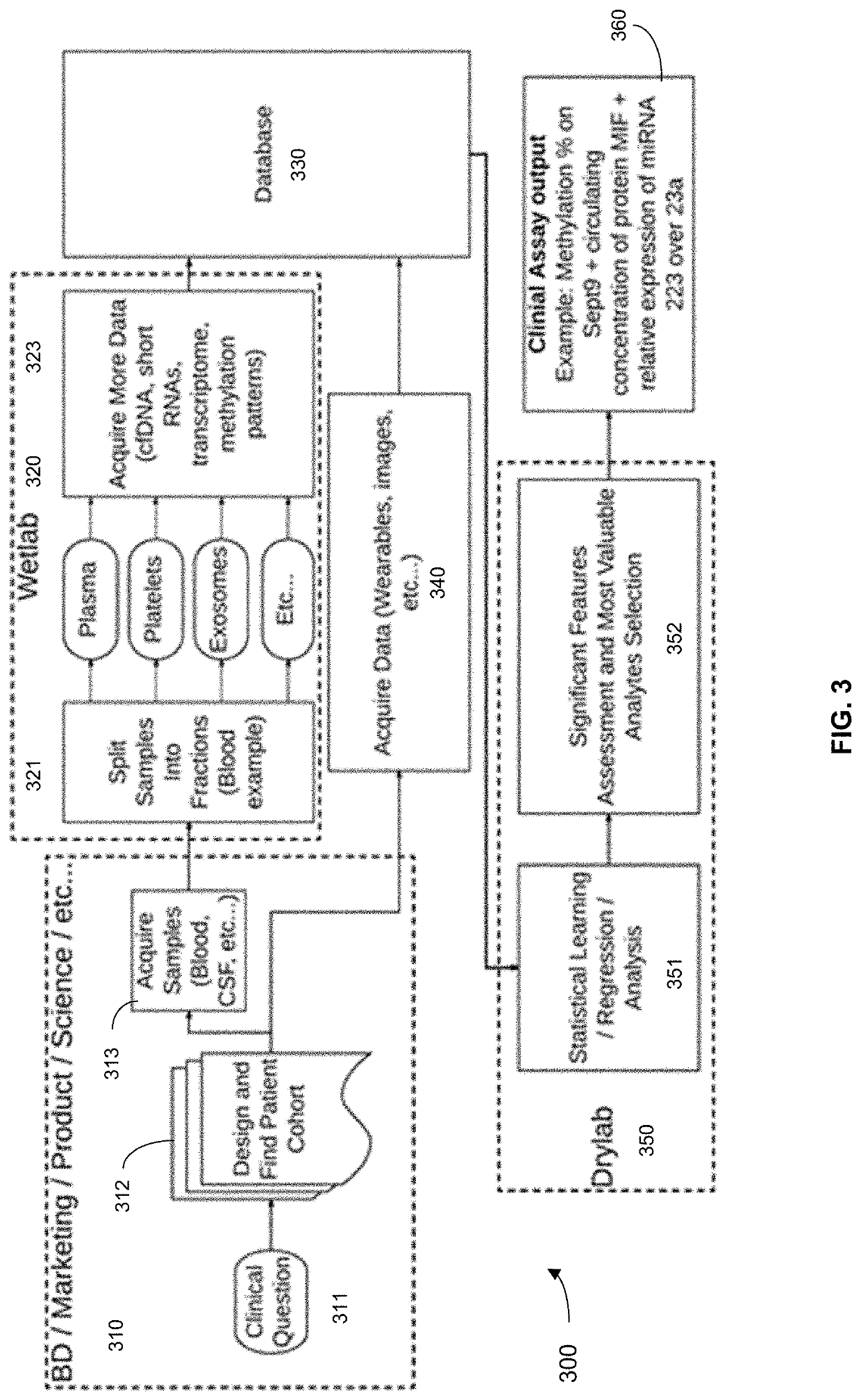Machine learning implementation for multi-analyte assay development and testing
a multi-analyte assay and machine learning technology, applied in the field of machine learning implementation of multi-analyte assay development and testing, can solve the problems of low participation, complex cancer screening, and limited current tests
- Summary
- Abstract
- Description
- Claims
- Application Information
AI Technical Summary
Benefits of technology
Problems solved by technology
Method used
Image
Examples
example 2
B. Analysis of Individual Assays for Classification of Biological Samples
[0477]This example describes analysis of multiple analytes and multiple assays to distinguish between healthy individuals, AA and stages of CRC.
[0478]A blood sample was separated into different portions, and four assays of three classes of molecules were investigated. The classes of molecules were cell-free DNA, cell-free miRNA, and circulating proteins. Two assays were performed on the cf DNA.
[0479]De-identified blood samples were obtained from healthy individuals and individuals with benign polyps, advanced adenomas (AAs), and stage I-IV colorectal cancer (CRC). After plasma separation, multiple analytes were assayed as follows. First, cell-free DNA (cfDNA) content was assessed by low-coverage whole-genome sequencing (lcWGS) and whole-genome bisulfite sequencing (WGBS). Next, cell-free microRNA (cf-miRNA) was assessed by small-RNA sequencing. Finally, levels of circulating proteins and were measured by quant...
PUM
 Login to View More
Login to View More Abstract
Description
Claims
Application Information
 Login to View More
Login to View More - R&D
- Intellectual Property
- Life Sciences
- Materials
- Tech Scout
- Unparalleled Data Quality
- Higher Quality Content
- 60% Fewer Hallucinations
Browse by: Latest US Patents, China's latest patents, Technical Efficacy Thesaurus, Application Domain, Technology Topic, Popular Technical Reports.
© 2025 PatSnap. All rights reserved.Legal|Privacy policy|Modern Slavery Act Transparency Statement|Sitemap|About US| Contact US: help@patsnap.com



